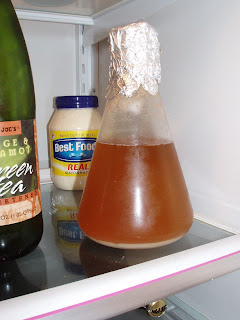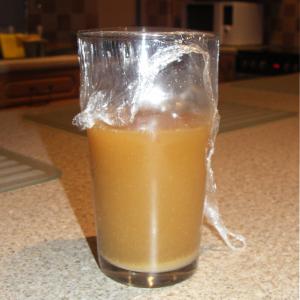48 hours later and there are no signs of fermentation and the yeast has formed a cake in the bottom of the growler. I have read that this yeast strain is typically a slow starter. Should I be concerned?
No you shouldn't be concerned, you should be happy. That IS the only sign of fermentation you usually get with a starter.
Just like in the fermenter, starter fermentation isn't always dynamic...It doesn't matter one blip in your fermenter or your starter flask if the airlock bubbles or not (if you are using an airlock and not tinfoil,) or if you see a krauzen. In fact starter fermentation are some of the fastest or slowest but most importantly, the most boring fermentations out there. Usually it's done withing a few hours of yeast pitch...usually overnight when we are sleeping, and the starter looks like nothing ever happened...except for the little band at the bottom. Or it can take awhile...but
either way there's often no "activity" whatsoever....
I usually run my stirplate for the first 24 hours, then shut it down, if you are spinning your starter it is really hard to get a krausen to form anyway, since it's all spinning, and there's often a head of foam on it from the movement.
All that really matters is that creamy band o yeast at the bottom.
This is a chilled sample so it's flocculated, but even with an unchilled sample you should see a band of yeast at the bottom. Here's an unchilled version
Same thing, a band.
As it is I've only ever seen two or three krausens actually on my starter (one blew off a bunch of krausen and knocked the tinfoil off the flask,) and the evidence of one on the flask at the "waterline" once. But I've never not had a starter take off.
Look for the yeast at the bottom, don't worry what it looks like on top. It's only been a day anyway.
You SAID you had yeast on the bottom....that's all you really need.






